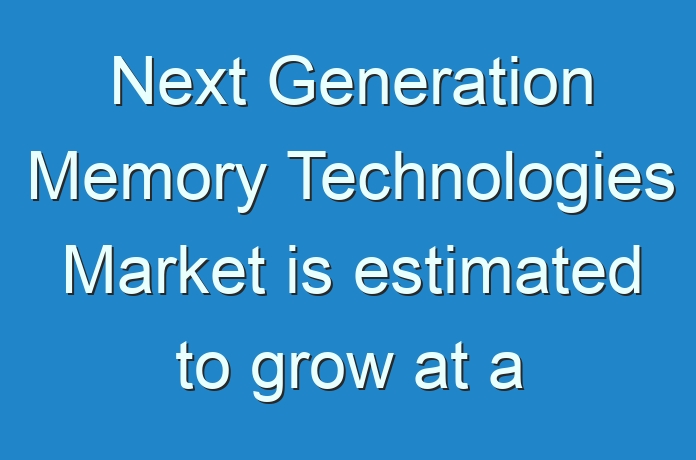
Next generation memory technologies include emerging memory solutions that have been introduced in the market in the recent past or are expected to be launched during the period 2013 to 2019. These memories compete with older memories such as flash, DRAM and SRAM on the basis of speed, scalability and cost. The total global market for next generation memory technologies stood at USD 207.8 million in 2012 and is estimated to grow at a CAGR of 46.1% during the period 2013 to 2019. Emerging memory solutions are experiencing growth in demand due to their potential for better speed and higher scalability.
The market has witnessed significant uptake for non-volatile emerging memory solutions as compared to volatile memory solutions. This is due to an inherent benefit offered by non-volatile memories: retention of data without the need of power. Among all non-volatile emerging memory solutions, FeRAM (ferroelectric RAM), MRAM (magneto-resistive RAM) and PCM (phase change memory) had significant market shares in 2012. Other emerging memory technologies include ReRAM (resistive RAM) and CBRAM (conductive bridging RAM). With increase in adoption of MRAM and PCM memory, cache memory and enterprise storage is anticipated to be the largest market segment by application for next generation memory technologies. Use of emerging memories is expected to improve the input/output (I/O) performance of the enterprise storage systems.
Request for a sample:
https://www.transparencymarketresearch.com/sample/sample.php?flag=S&rep_id=1103
Major interface technologies being deployed across the memory market include double data rate (DDR) interface, SATA (Serial ATA), SAS (serial attached small computer system interface), PCIe (peripheral component interconnect express) and I2C (inter integrated circuit). DDR interface includes DDR 1/2/3/4 and LPDDR. DDR interfaces find application in storage, especially SSDs (solid-state drives). DDR was the dominant interface technology being deployed with next generation memory technologies and held 47.6% share in 2012. North America was the largest market in 2012, followed by Europe. Rise in demand for memory technologies offering lower cost per bit and demand for faster mobile memory chips are important trends in the North American region. Europe experienced growth in next generation memory technologies due to increasing volatility in the market and decline in average selling prices for existing memories. This has led to a rise in interest in more sustainable memory options. Growth in the Asia Pacific region is led by demand from Japan, China and South Korea.
Ask for brochure:
https://www.transparencymarketresearch.com/sample/sample.php?flag=B&rep_id=1103
Fujitsu Ltd. was the market leader in 2012 due to higher sales of its FeRAM technology, which is a relatively mature product. Fujitsu was followed by Everspin Technologies, Inc. and Micron Technology, Inc. In 2012, Everspin was a major manufacturer of MRAM, while Micron Technology led the market for PCM. Other important players include SK Hynix Inc., Avalanche Technology Inc., Cypress Semiconductor Corporation, Adesto Technologies Corporation Inc., Samsung Electronics Co., Ltd., Crossbar Inc., Winbond Electronics Corporation.
Read Latest Press Release By TMR:





